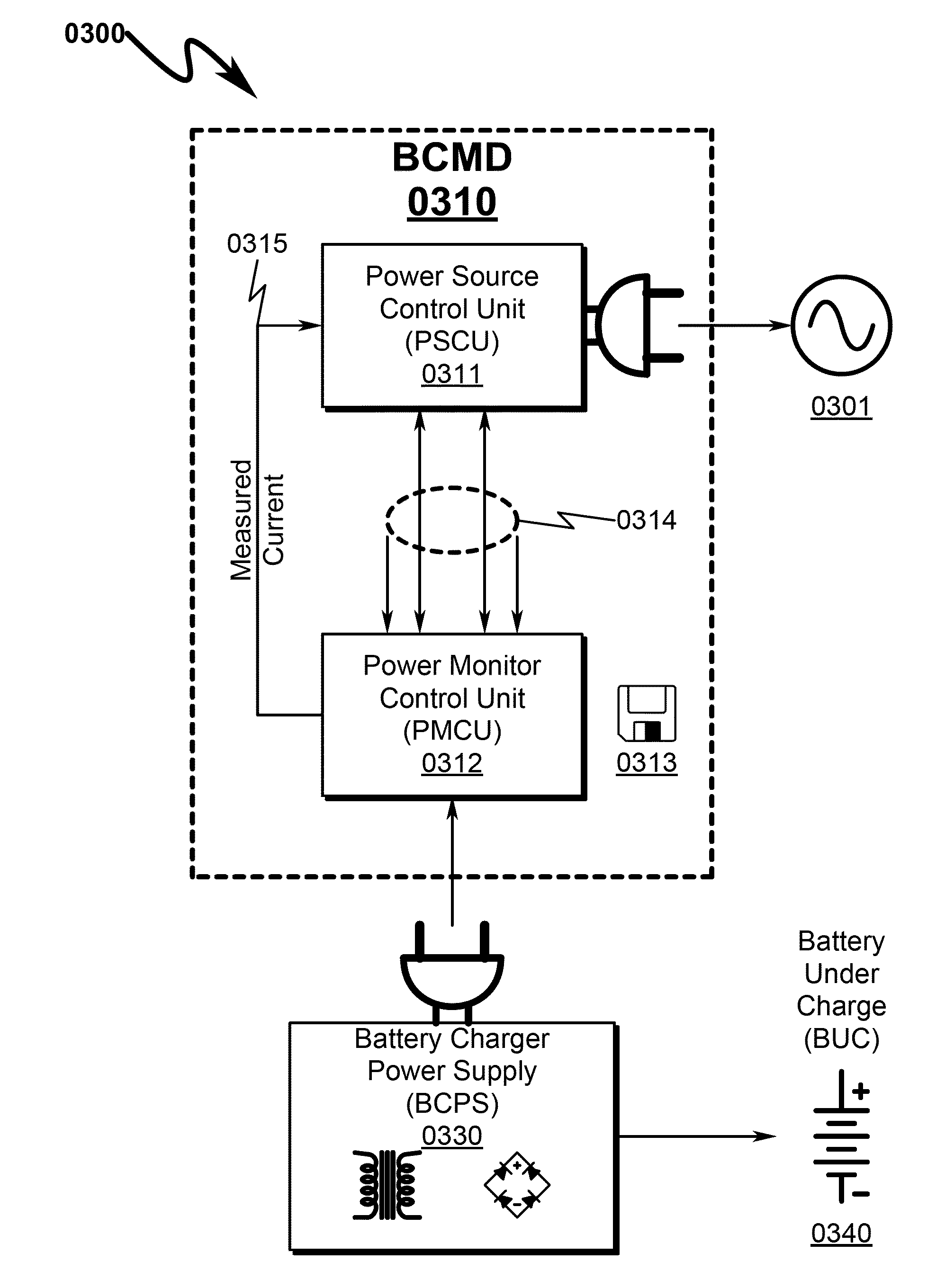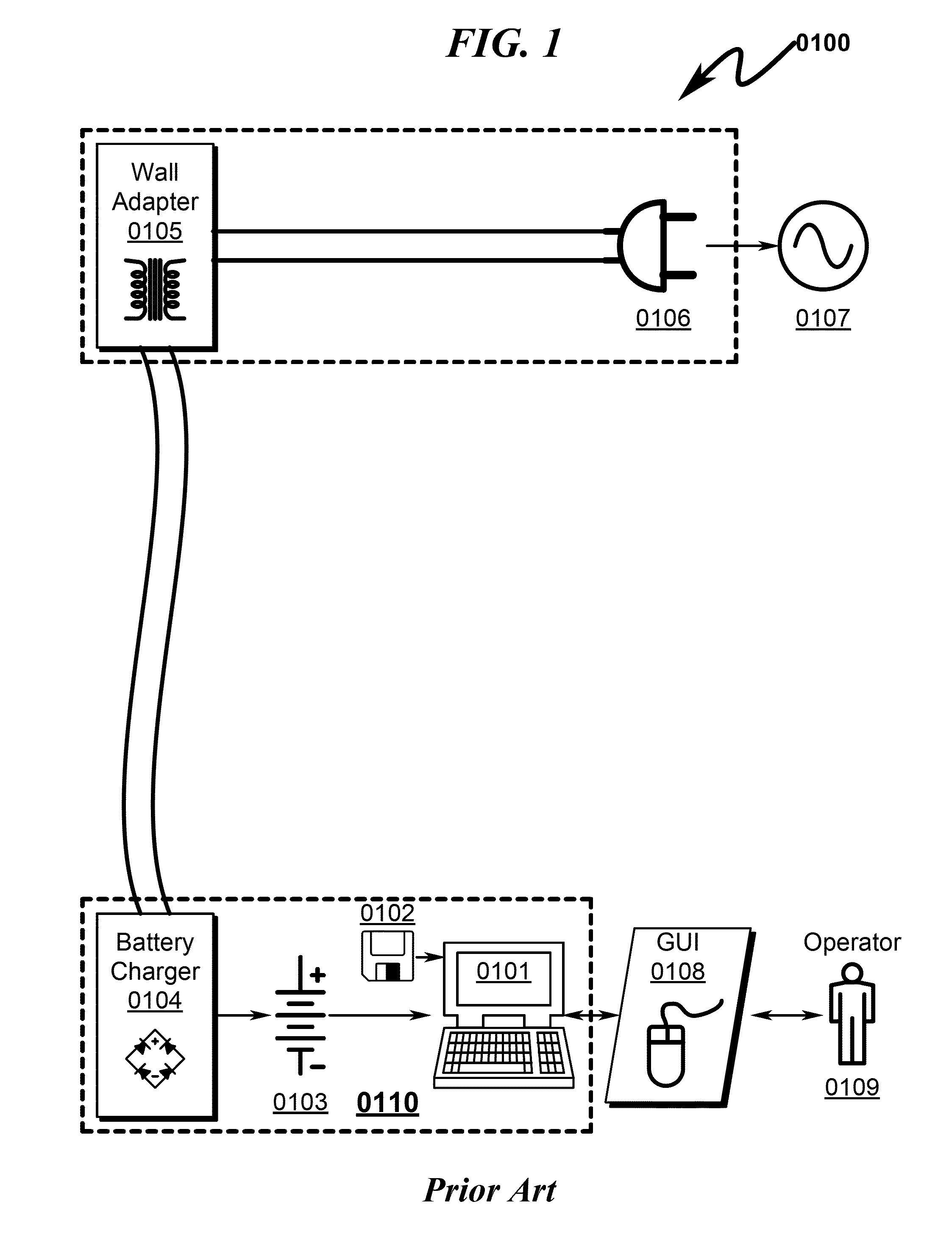Battery charger management system and method
a battery charger and management system technology, applied in data switching networks, transportation and packaging, sustainable buildings, etc., to achieve the effect of improving battery life and reducing battery material was
- Summary
- Abstract
- Description
- Claims
- Application Information
AI Technical Summary
Benefits of technology
Problems solved by technology
Method used
Image
Examples
case 1
he Range of Absorotion Stage
[0187]As discussed earlier, the critical and defining attributes of a charging profile are the following:[0188]IS—the current at start of the Absorption Stage;[0189]IE—the current at the end of the Absorption Stage; and[0190]TA—the duration of Absorption Stage.
As an example,
IS=1 A, IE=10 mA, and TA=1.5 Hr.
[0191]There could be many ways to identify these two “turning points” of the charging profile. Here is one exemplary algorithm to find IS, IE, and TA:[0192]Given a set of input current and time samples {IK, TK}, K=1, 2, . . . , N, and the sample interval ΔT;[0193]Define εvs and εA, two configurable tolerance parameters used below. The algorithm described herein may typically initially let Ev=10 mV and εA=0.5 *ΔT[0194]Let ΔIK=I(K+1)−IK; K=1,2, . . . , N−1; the difference between two consecutive current samples (think of this as the derivative of the profile trajectory).[0195]Let δIK=ΔI(K+1)−ΔIK, K=1,2, . . . , N−2, the difference of the difference (think ...
case 2
; Find the Range of Bulk Stage as Well as Absorption Stage
[0202]If a battery is charged that has close to zero capacity then a more complete charging profile can be constructed. In this case, there are three critical points of interest: [IB, 0], [IS, TS] and [IE, TE]; where IB is the input current at the start of the Bulk Stage at time T=0, [IS, TS] and [IE, TE] are calculated as in CASE 1. With this profile it is known that the time range [0, TS] is for the Bulk Stage as well as the time range [TS, TE] being for the Absorption Stage. These time intervals are further detailed in FIG. 25 (2500).
case 3
[0203]A battery database may be constructed that contains charging profiles obtained as in CASE 2 for all types of batteries available. The battery database may in some preferred embodiments be hosted on a web server. Users may specify via a user interface the brand name of the battery. The microcontroller (or other PSCU computing device) in the BCDM can go to the database to look for the charging profile for the given brand name. If the BCMD finds it, it may download the information, and uses that battery characteristic profile as the initial charging profile.
Updating the Charging Profile
[0204]As a battery ages, its charging profile may change. From time to time (say, for every 10 charges) its profile is updated (or relearned) with the sampled current data.
[0205]If different batteries are charged by the same battery charger, the BCMD may keep charging profiles for different batteries. Consumers can specify the brand name and assign an ID to a battery to be charged, so that ...
PUM
 Login to View More
Login to View More Abstract
Description
Claims
Application Information
 Login to View More
Login to View More - R&D
- Intellectual Property
- Life Sciences
- Materials
- Tech Scout
- Unparalleled Data Quality
- Higher Quality Content
- 60% Fewer Hallucinations
Browse by: Latest US Patents, China's latest patents, Technical Efficacy Thesaurus, Application Domain, Technology Topic, Popular Technical Reports.
© 2025 PatSnap. All rights reserved.Legal|Privacy policy|Modern Slavery Act Transparency Statement|Sitemap|About US| Contact US: help@patsnap.com



